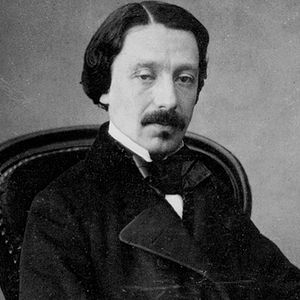Léon Foucault: Difference between revisions
No edit summary |
No edit summary |
||
| Line 5: | Line 5: | ||
==Biography== | ==Biography== | ||
[[File:Foucault.jpg|thumb|300px|Foucault]] | [[File:Foucault.jpg|thumb|300px|Foucault]] | ||
Born Jean Bernard Léon Foucault, Foucault was born on September 18, 1819 to a Parisian publisher. Due to his family's education and access to resources, Foucault was home schooled for the majority of his childhood, before leaving home to study medicine. He quickly discovered that due to his blood phobia, medicine was not the field for him. In order to continue academic pursuits Léon began studies in physics. Initially focusing on optics, Foucault worked on photographic processes, before becoming an assistant to Alfred Donné, working with microscopic observation. | |||
After finishing his term with Alfred Donné, Léon partnered with [Hippolyte Fizeau] in order to study properties of visible light generated by the sun. In 1850 the two would conduct experiments detecting the speed of light through different mediums, effectively disproving Newton's theory of light. | |||
==Notable works== | ==Notable works== | ||
Revision as of 13:38, 4 December 2015
Claimed by PierreR
Biography

Born Jean Bernard Léon Foucault, Foucault was born on September 18, 1819 to a Parisian publisher. Due to his family's education and access to resources, Foucault was home schooled for the majority of his childhood, before leaving home to study medicine. He quickly discovered that due to his blood phobia, medicine was not the field for him. In order to continue academic pursuits Léon began studies in physics. Initially focusing on optics, Foucault worked on photographic processes, before becoming an assistant to Alfred Donné, working with microscopic observation.
After finishing his term with Alfred Donné, Léon partnered with [Hippolyte Fizeau] in order to study properties of visible light generated by the sun. In 1850 the two would conduct experiments detecting the speed of light through different mediums, effectively disproving Newton's theory of light.
Notable works
Foucault's Pendulum
Measurement of the speed of light
- The Index of Refraction: the ratio of the speed of light through a vacuum to the speed of light in the medium. Written as: [math]\displaystyle{ n=\frac{c}{v} }[/math], where
- c=speed of light in a vacuum
- v=speed of light in medium
Note that the index of refraction can never be less than one, since [math]\displaystyle{ \frac{c}{c}=1 }[/math].
- Snell's Law: size of the angle of refraction, or how much the light bends. Written as:[math]\displaystyle{ n_1\sin\theta_1=n_2\sin\theta_2 }[/math], where
- [math]\displaystyle{ n_1 }[/math]=index of refraction of medium 1
- [math]\displaystyle{ n_2 }[/math]=index of refraction of medium 2
- [math]\displaystyle{ \theta_1 }[/math]=angle of incidence
- [math]\displaystyle{ \theta_2 }[/math]=angle of refraction.
See also
External links
http://www-rohan.sdsu.edu/~aty/explain/optics/refr.html